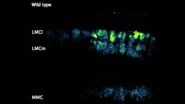(Press-News.org) LA JOLLA, Calif., September 2, 2015 - A new Sanford Burnham Prebys Medical Discovery Institute (SBP) study takes a step forward in understanding how similar, yet genetically unrelated neurodegenerative diseases, such as Alzheimer's disease, frontal temporal dementia, and progressive supranuclear palsy (PSP) are caused by the protein tau. The findings, published today in Neuron, create new opportunities to target this key protein that leads to the brain lesions found in patients with impaired motor functions and dementia.
"Our research shows how the abundance of a protein called appoptosin increases tau aggregates called tangles, which are toxic to the brain and lead to the progressive deterioration of the central nervous system," said Huaxi Xu, professor in the Degenerative Diseases Program at SBP. "By understanding how appoptosin drives this process, we can now look at ways to inhibit key triggering points and potentially slow the progression of this class of neurodegenerative diseases which are collectively known as tauopathies."
What are tauopathies?
Tauopathies are neurodegenerative diseases that are signified by the presence of irregular tangle-like clumps of the protein tau that appear in the brain and accumulate during as the disease progresses. Because tau tangles appear in numerous diseases such as Alzheimer's and PSP, it seemed likely that tau could be a key factor in causing neuron and brain malfunction in these diseases. However, how diseases such as PSP are triggered, and whether similar causes could generate these tau protein tangles were unknown.
Tau is a protein that maintains the integrity of long hollow tube structures called microtubules, which are major structural elements of cells. In neurons, microtubules form long extensions called axons where signals are rapidly transported over long distances when neurons communicate with each other. When tau becomes abnormally modified by hyperphosphorylation, or cleaved by the enzyme caspase-3, which itself can also facilitate its hyperphosphorylation, it loses its biological activity and goes through conformational changes that allow the protein to accumulate and form tangles.
Because it was largely unknown how caspase-3 is triggered to induce tau aggregation in tangles, determining the sequence of events that lead to tau cleavage and aggregation is one of the most important goals for the prevention and treatment of tauopathies.
Key findings of the paper
The new paper highlights a novel role for appoptosin in neurological tauopathy disorders such as PSP. PSP is a neurological disease with tau brain aggregates, where patients experience serious problems with balance, eye movement and thinking. Until now, genetic and biological triggers for PSP were unknown. By examining patients with PSP, it became apparent that variation in the DNA sequence of a single nucleotide (a SNP) was associated with the disease and correlated with elevated levels of appoptosin that increased caspase-mediated tau cleavage, tau aggregation, and synaptic dysfunction.
Neurodegenerative triggering factors appoptosin and caspase-3 cleaved tau were also found to be overabundant or over-activated in brain samples of patients with Alzheimer's disease and frontotemporal dementia, supporting the importance of their contribution to these neurodegenerative disorders.
"A better understanding of the mechanisms that cause neurofibrillary tangles is of clinical importance for developing therapeutic strategies to prevent and treat tauopathies," added Xu. "Our findings suggest that appoptosin and/or caspase-3 may be potential targets in the treatment of these neurodegenerative diseases."
INFORMATION:
This study was supported by NIH grants R01AG021173, R01AG038710, R01NS046673, R01AG1844, R01AG5131, R01AG11385, R01NS076411, PN2EY016525, and R01NS66072. Additional support was proved by the Alzheimer's Association, The Tanz Family Funds, the National Natural Science Foundation of China, the Down Syndrome Research, Treatment Foundation, the Larry L. Hillblom Foundation, and the Canadian Institutes of Health China-Canada AD Initiative.
About Sanford Burnham Prebys Medical Discovery Institute
Sanford Burnham Prebys Medical Discovery Institute (SBP) is an independent nonprofit research organization that blends cutting-edge fundamental research with robust drug discovery to address unmet clinical needs in the areas of cancer, neuroscience, immunity, and metabolic disorders. The Institute invests in talent, technology, and partnerships to accelerate the translation of laboratory discoveries that will have the greatest impact on patients. Recognized for its world-class NCI-designated Cancer Center and the Conrad Prebys Center for Chemical Genomics, SBP employs more than 1,100 scientists and staff in San Diego (La Jolla), Calif., and Orlando (Lake Nona), Fla. For more information, visit us at SBPdiscovery.org. The Institute can also be found on Facebook at facebook.com/SBPdiscovery and on Twitter @SBPdiscovery.
Intentional burning in tropical forests has accounted for nearly 20% of all greenhouse-gas emissions since preindustrial times and will have major implications for Earth's climate and biodiversity in years to come. To better understand the complex dynamics surrounding these fires, a team of researchers led by Jennifer K. Balch, of the University of Colorado-Boulder, conducted a six-year controlled burn experiment in an Amazonian rainforest block located in Mato Grasso, Brazil. The results are described in an article that is part of BioScience's just-released Special Section ...
LA JOLLA--When you're taking a walk around the block, your body is mostly on autopilot--you don't have to consciously think about alternating which leg you step with or which muscles it takes to lift a foot and put it back down. That's thanks to a set of cells in your spinal cord that help translate messages between your brain and your motor neurons, which control muscles.
Now, for the first time, researchers have created a method to watch--in real time--the activity of those motor neurons. The new technology, developed by Salk scientists and published in Neuron, is ...
Georgia Institute of Technology researchers have developed a new artificially intelligent system that crowdsources plots for interactive stories, which are popular in video games and let players choose different branching story options.
With potentially limitless crowdsourced plot points, the system could allow for more creative stories and an easier method for interactive narrative generation. Current AI models for games have a limited number of scenarios, no matter what a player chooses. They depend on a dataset already programmed into a model by experts.
Using ...
Tropical Storm Fred is losing its punch. Satellite imagery shows that there are no strong thunderstorms developing in the tropical storm indicating that the storm is weakening.
The RapidScat instrument that flies aboard the International Space Station measured Tropical Storm Fred's winds on September 1 at 4 a.m. EDT. RapidScat saw that the strongest winds tightly circled the center and were on the northern side of the storm, as strong as 24 and 27 meters per second (53.6 mph/ 86.4 kph and 60.4/97.2 kph).
On September 1 at 13:00 UTC (9 a.m. EDT) the MODIS instrument ...
GeoSpace
High water tables can be a boon to crop yields
A high water table - usually a bane to crop yields - can provide much-needed water during drought and to crops planted in coarse-grained soils, found a new study published online in Water Resources Research.
3-D maps illustrate formation of the Hangai Dome in central Mongolia
Scientists used 1.7 million seismic wave measurements from 227 earthquakes across East Asia to create animated 3-D images of subsurface rock formations under the Hangai Dome in central Mongolia as part of their recent study accepted in Geophysical ...
A new study by WCS (Wildlife Conservation Society) has found that coral reef diversity 'hotspots' in the southwestern Indian Ocean rely more on the biomass of fish than where they are located, a conclusion that has major implications for management decisions to protect coral reef ecosystems.
Using data gathered over a 12-year period from nearly 270 coral reefs across the southwestern Indian Ocean, the WCS study found that the highest conservation priorities in the region should be reef systems where fish biomass exceeds 600 kilograms per hectare. This finding conflicts ...
Can water ever be too clean? If the intent is to store it underground, the answer, surprisingly, is yes. In a new study, Stanford scientists have shown that recycled water percolating into underground storage aquifers in Southern California picked up trace amounts of arsenic because the water was too pure.
The research, published online in the journal Environmental Science & Technology, sheds light on a poorly understood aspect of groundwater recharge with purified recycled water, namely the potential mobilization of arsenic. Arsenic is a naturally occurring element that ...
ATLANTA - Sept. 2, 2015 - The number of men with breast cancer who undergo surgery to remove the unaffected breast has risen sharply, according to a new report by American Cancer Society and Dana Farber Cancer Institute researchers. The report, appearing in JAMA Surgery, is the first to identify the trend, which mirrors a trend seen in U.S. women over the past two decades.
Breast cancer in men is rare, accounting for only about 1 percent of all cases in the United States. In women (particularly younger women), the use of contralateral prophylactic mastectomy (CPM) surgery ...
Genes are not only important for regular memory performance, but also for the development of Alzheimer's disease. Researchers at the University of Basel now identified a specific group of genes that plays a central role in both processes. This group of molecules controls the concentration of calcium ions inside the cell. Their results appear in the current issue of the journal JAMA Psychiatry.
Intact memory capacity is crucial for everyday life. This fact becomes apparent once a memory disorder has developed. Alzheimer's disease is the most common cause of age-associated ...
WASHINGTON, DC, September 2, 2015 -- Social scientists have long argued documentary films are powerful tools for social change.
But a University of Iowa (UI) sociologist and his co-researchers are the first to use the Internet and social media to systematically show how a documentary film reshaped public perception and ultimately led to municipal bans on hydraulic fracking.
By measuring an uptick in online searches as well as social media chatter and mass media coverage, Ion Bogdan Vasi, an associate professor of sociology at the UI and corresponding author of a new ...


